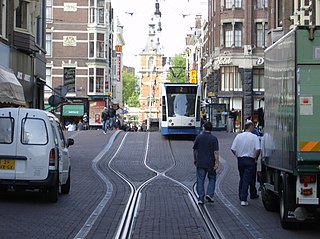Health has a variety of definitions, which have been used for different purposes over time. Health can be promoted by encouraging healthful activities, such as regular physical exercise and adequate sleep, and by reducing or avoiding unhealthful activities or situations, such as smoking or excessive stress. Some factors affecting health are due to individual choices, such as whether to engage in a high-risk behavior, while others are due to structural causes, such as whether the society is arranged in a way that makes it easier or harder for people to get necessary healthcare services. Still, other factors are beyond both individual and group choices, such as genetic disorders.

Exercise is intentional physical activity to enhance or maintain fitness and overall health.

Bicycle-friendly policies and practices help some people feel more comfortable about traveling by bicycle with other traffic. The level of bicycle-friendliness of an environment can be influenced by many factors including town planning and cycling infrastructure decisions. A stigma towards people who ride bicycles and fear of cycling is a social construct that needs to be fully understood when promoting a bicycle friendly culture.

Physical fitness is a state of health and well-being and, more specifically, the ability to perform aspects of sports, occupations, and daily activities. Physical fitness is generally achieved through proper nutrition, moderate-vigorous physical exercise, and sufficient rest along with a formal recovery plan.

Preventive healthcare, or prophylaxis, is the application of healthcare measures to prevent diseases. Disease and disability are affected by environmental factors, genetic predisposition, disease agents, and lifestyle choices, and are dynamic processes that begin before individuals realize they are affected. Disease prevention relies on anticipatory actions that can be categorized as primal, primary, secondary, and tertiary prevention.

Sedentary lifestyle is a lifestyle type, in which one is physically inactive and does little or no physical movement and/or exercise. A person living a sedentary lifestyle is often sitting or lying down while engaged in an activity like socializing, watching TV, playing video games, reading or using a mobile phone or computer for much of the day. A sedentary lifestyle contributes to poor health quality, diseases as well as many preventable causes of death.

ParticipACTION is a national non-profit organization, originally launched as a Canadian government program in the 1970s, to promote healthy living and physical fitness. It shut down due to financial cutbacks in 2001, but was revived on February 19, 2007 with a grant of $5 million from the Canadian federal government.

Physical activity is defined as any voluntary bodily movement produced by skeletal muscles that requires energy expenditure. Physical activity encompasses all activities, at any intensity, performed during any time of day or night. It includes both exercise and incidental activity integrated into daily routine. This integrated activity may not be planned, structured, repetitive or purposeful for the improvement of fitness, and may include activities such as walking to the local shop, cleaning, working, active transport etc. Lack of physical activity is associated with a range of negative health outcomes, whereas increased physical activity can improve physical and mental health, as well as cognitive and cardiovascular health. There are at least eight investments that work to increase population-level physical activity, including whole-of-school programmes, active transport, active urban design, healthcare, public education and mass media, sport for all, workplaces and community-wide programmes. Physical activity increases energy expenditure and is a key regulator in controlling body weight.

A walking bus is a form of student transport for young schoolchildren who, chaperoned typically by two adults, walk. The crocodile may walk to school along a set route, with some similarities to a school bus route, with designated "bus stops" and "pick up times" at which they pick up and "drop off" children. In Britain a group of schoolchildren walking together in a long line of pairs on an activity without stops or pickups, escorted by teachers, has been referred to as a crocodile since at least 1870.
General fitness training works towards broad goals of overall health and well-being, rather than narrow goals of sport competition, larger muscles or concerns over appearance. A regular moderate workout regimen and healthy diet can improve general appearance markers of good health such as muscle tone, healthy skin, hair and nails, while preventing age or lifestyle-related reductions in health and the series of heart and organ failures that accompany inactivity and poor diet.

The following outline is provided as an overview of and topical guide to exercise:

Complete streets is a transportation policy and design approach that requires streets to be planned, designed, operated and maintained to enable safe, convenient and comfortable travel and access for users of all ages and abilities regardless of their mode of transportation. Complete Streets allow for safe travel by those walking, cycling, driving automobiles, riding public transportation, or delivering goods.

In urban planning, walkability is the accessibility of amenities by foot. It is based on the idea that urban spaces should be more than just transport corridors designed for maximum vehicle throughput. Instead, it should be relatively complete livable spaces that serve a variety of uses, users, and transportation modes and reduce the need for cars for travel.

Worldwide there has been a large shift towards less physically demanding work and a more sedentary lifestyle. This has been accompanied by increasing use of mechanized transportation, automobile dependency, a greater prevalence of labor saving technology in the home, and less active recreational pursuits. At least 31% of the world's population does not get sufficient physical exercise. This is true in almost all developed and developing countries, and among children. Some experts refer to sitting as "the new smoking" because of its negative effects on overall health.
Exercise prescription commonly refers to the specific plan of fitness-related activities that are designed for a specified purpose, which is often developed by a fitness or rehabilitation, or Exercise medicine specialist for the client or patient. Due to the specific and unique needs and interests of the client/patient, the goal of exercise prescription should focus on motivation and customization, thus making achieving goals more likely to become successful. Exercise prescription should take into account the patient's medical history, and a pre-examination of a patient's physical fitness to make sure a person has the capacity to perform the exercises.
Physical Activity Guidelines for Americans are National Physical Activity Guidelines first published by the United States Department of Health and Human Services (HHS) in 2008. These guidelines provided physical activity recommendations for people aged six years and older, including those with many chronic health conditions and disabilities. The science-based Guidelines recommend a total amount of physical activity per week to achieve a range of health benefits. In 2018, HHS released an update to the first set of guidelines. This 2018 edition provides guidelines for people aged three years and older and summarizes the new knowledge gained from studies that were conducted since the first edition was released in 2008.

Active mobility, soft mobility, active travel, active transport or active transportation is the transport of people or goods, through non-motorized means, based around human physical activity. The best-known forms of active mobility are walking and cycling, though other modes include running, rowing, skateboarding, kick scooters and roller skates. Due to its prevalence, cycling is sometimes considered separately from the other forms of active mobility.

Healthy community design is planning and designing communities that make it easier for people to live healthy lives. Healthy community design offers important benefits:

Lack of physical education is the inadequacy of the provision and effectiveness of exercise and physical activity within modern education.
The benefits of physical activity range widely. Most types of physical activity improve health and well-being.
















